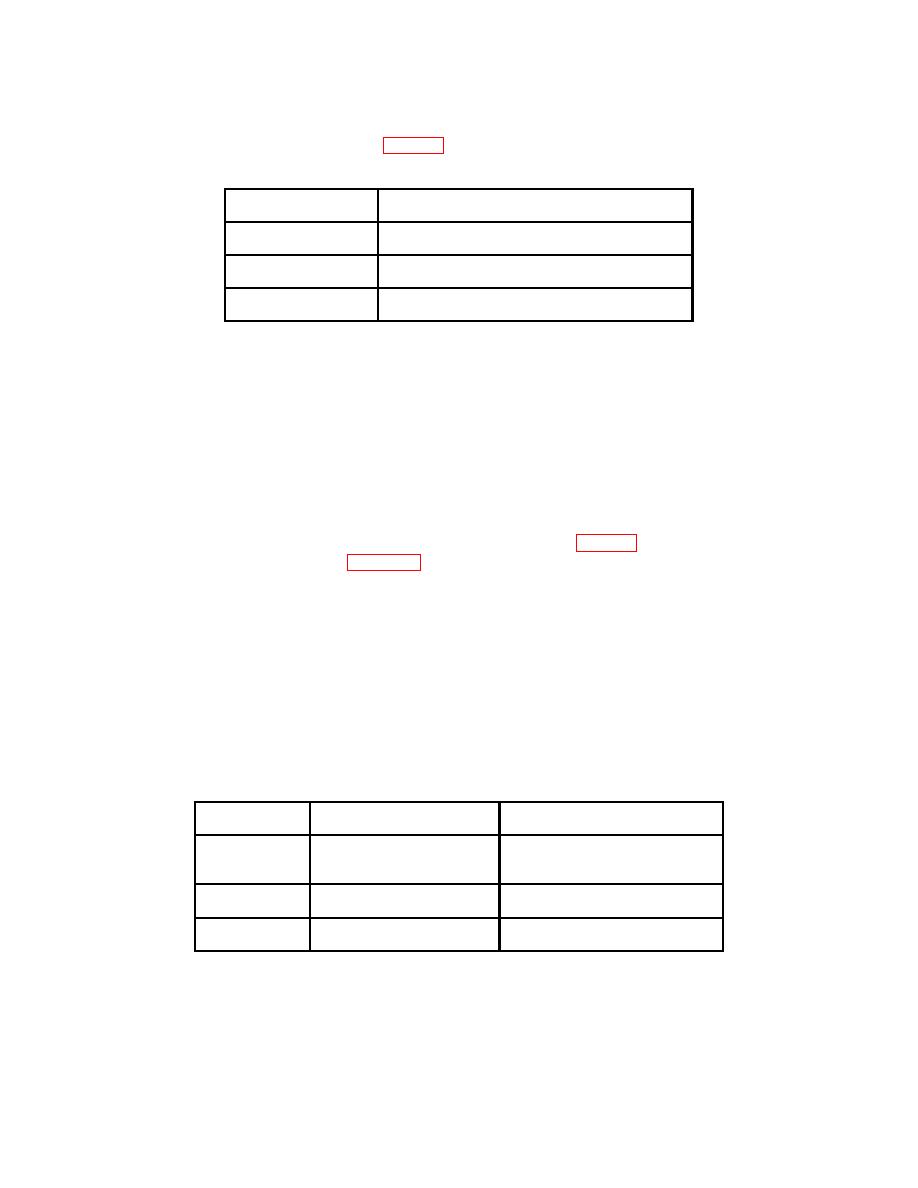
TB 9-4931-363-50
Table 1. Calibration Description
Test Instrument
Performance
Parameters
Specifications
DC voltage
Range: 0 to 100 volts
Accuracy: 1% of reading
AC voltage
Range: 0 to 150 volts, 400 20 Hz
Accuracy: 0.5% of reading
Ohms
Range: 0 to 100K
Accuracy: 5% of reading
3. Forms and Records. Department of the Army forms and procedures used for
equipment maintenance will be those prescribed by TM 38-750, the Army Maintenance
Management System (TAMMS).
SECTION II
EQUIPMENT REQUIREMENTS
4. Equipment and Accessories Required. Equipment and accessories required for
calibration performance checks and adjustments are listed in table 2 and 3. The equipment
and accessories identified in tables 2 and 3 are issued with the secondary transfer
calibration standards set.
NOTE
Minimum use specifications are the principal parameters
required for performance of the calibration and are included to
assist in the selection of alternate equipment which may be
used at the discretion of the calibration activity. Satisfactory
performance of alternate items shall be verified prior to use.
All applicable equipment must bear evidence of current
calibration.
Table 2. Equipment Required
Minimum Use
Calibration*
Item
Specifications
Equipment
AC calibrator
Range: 0 to 158 volts ac,
745A Calibration Standard, AC
20 Hz to 1 kHz
Precision Hewlett Packard
MIS 10342 Type 1
Accuracy: 0.1%
DC calibrator
Range: 0 to 101 volts dc
332A Voltage Standard
John Fluke 7911393
Accuracy: 0.5%
Decade resistor
Range : 0 to 105K
Biddle-Gray Model
601147-1 (7910328)
Accuracy. 1%
*The
calibration equipment utilized in this procedure was selected from those known to be
available at Department of Defense facilities, and the listing by make or model number carries
no implication of preference, recommendation, or approval by the Department of Defense for
use by other agencies. It is recognized that equivalent equipment produced by other
manufacturers may be capable of equally satisfactory performance in the procedure.
3

